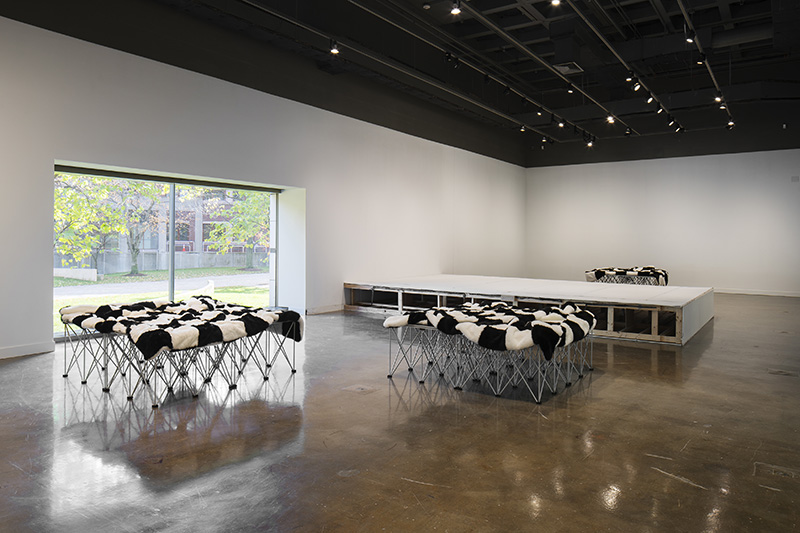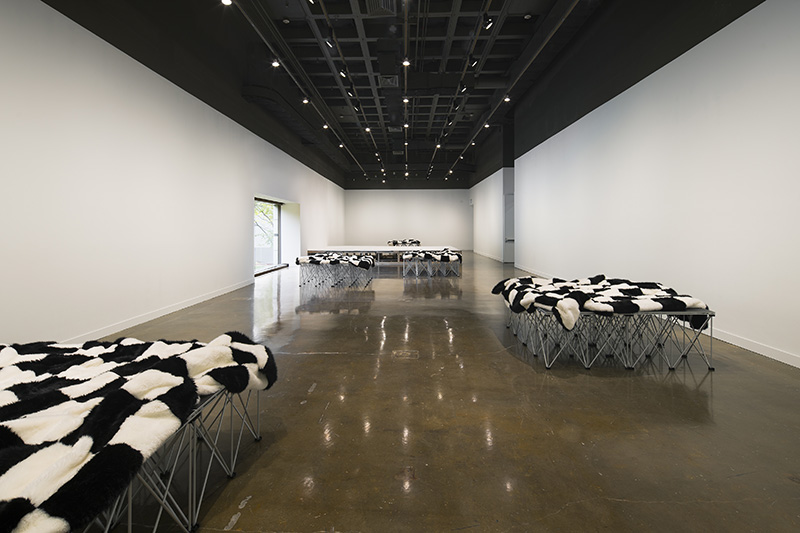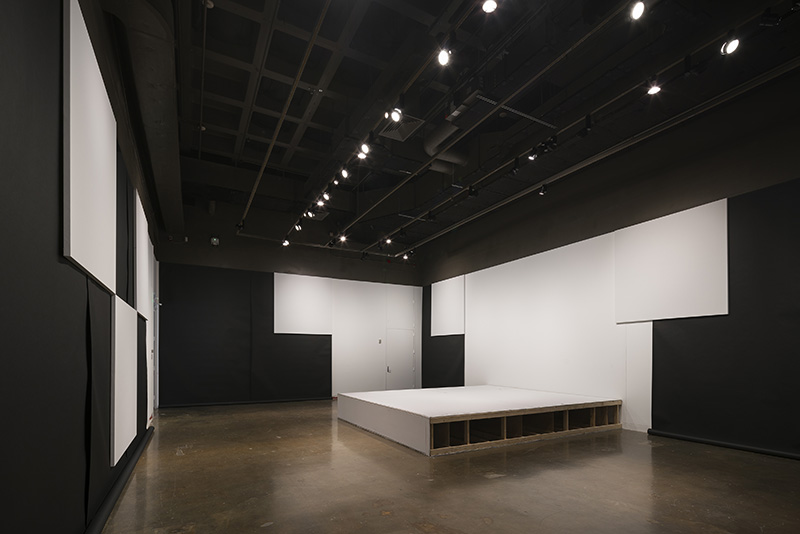ART CITIES:Cambridge-Heimo Zobernig
 The work of Heimo Zobernig spans an array of media, from architectural intervention and installation, through performance, film and video, to sculpture and painting. His practice across all these forms is connected by an interrogation of the formal language of modernism, at its most familiar in the tropes of the monochrome and the grid.
The work of Heimo Zobernig spans an array of media, from architectural intervention and installation, through performance, film and video, to sculpture and painting. His practice across all these forms is connected by an interrogation of the formal language of modernism, at its most familiar in the tropes of the monochrome and the grid.
By Efi Michalarou
Photo: MIT List Visual Arts Center Archive
Heimo Zobernig’s solo exhibition “Chess Painting” spans the List Visual Arts Center’s two main galleries. Using the museum and its architecture as a stage; Zobernig allows a viewer to confront the constructed, at times theatrical, experience of visiting an art exhibition. In the Hayden Gallery, Zobernig extends a body of work developed for a solo exhibition at Malmö Kunsthall (30/1-1/5/2016) that features repurposed mobile performance stages and black-and-white checkered faux fur blankets. Geometric nets and chequered boards have been a recurring motif in Zobernig’s work. If the grid was adopted as a formalist vocabulary by significant modernist artists, from Piet Mondrian and Max Bill to Sol LeWitt, Zobernig deploys it as a way to spoil the viewer’s thirst for visual pleasure, and to suggest a freer understanding of art as an open visual code. In the Reference Gallery, Zobernig created a new room-scale installation that includes a series of eight large-scale canvases, hung in a configuration referencing the title of the exhibition and the graphic on the blankets in the neighboring gallery. He bends, warps, and abstracts the grid, a recurring formal and conceptual device in his practice, continuing to work simultaneously with and against the grain of Modernism. Zobernig gives life to the cold logic of the grid, implying play, narrative, and all of the associations that come with the game of chess—in an immersive installation and the soft bunching of a blanket. In both spaces, the artist also presents an architectural intervention and “lay down” two walls (one in each gallery). By physically reorienting the architecture that is such a foundational mode of display for an art museum, Zobernig turns a wall into a stage. In the Hayden Gallery, he sets this stage among the mobile performance platforms that have been turned into gallery seating. Playfully acknowledging and amplifying methods of display and design, balancing form and function, Zobernig questions the hierarchies and mechanisms at work in the presentation and understanding of an artwork. In doing so, he blurs the line between what constitutes a painting versus a sculpture, a wall versus a stage, and a seat versus an artwork. The exhibition also includes a hybrid between a catalogue raisonné and an artist’s book titled “Books & Posters”. Designed by the graphic studio Oficina de disseny based in Barcelona, it presents 114 artist’s books, monographs and exhibition catalogues as well as 117 posters.
Info: Yuri Stone &Diana Baldon, MIT List Visual Arts Center, 20 Ames Street, Building E15, Cambridge-MA, Duration: 27/10-31/12/17, Days & Hours: Tue-Wed & Fri-Sun 12:00-18:00, Thu 12:00-20:00, https://listart.mit.edu


